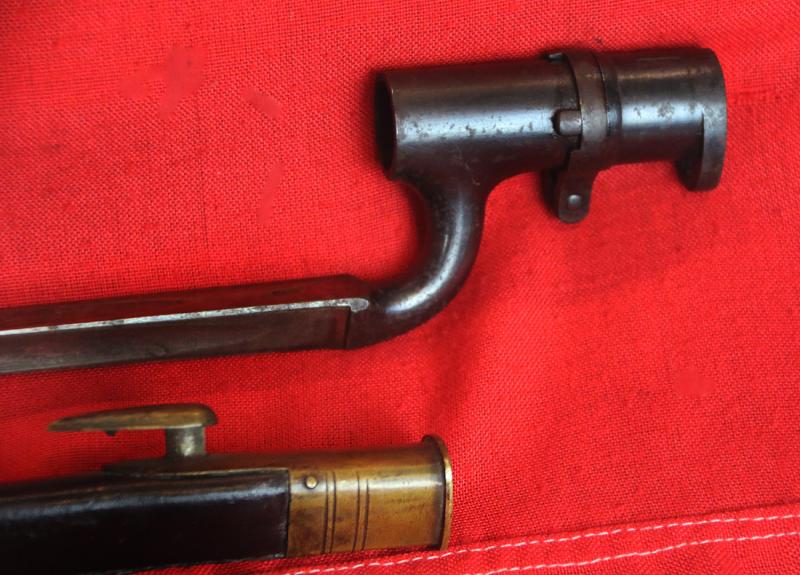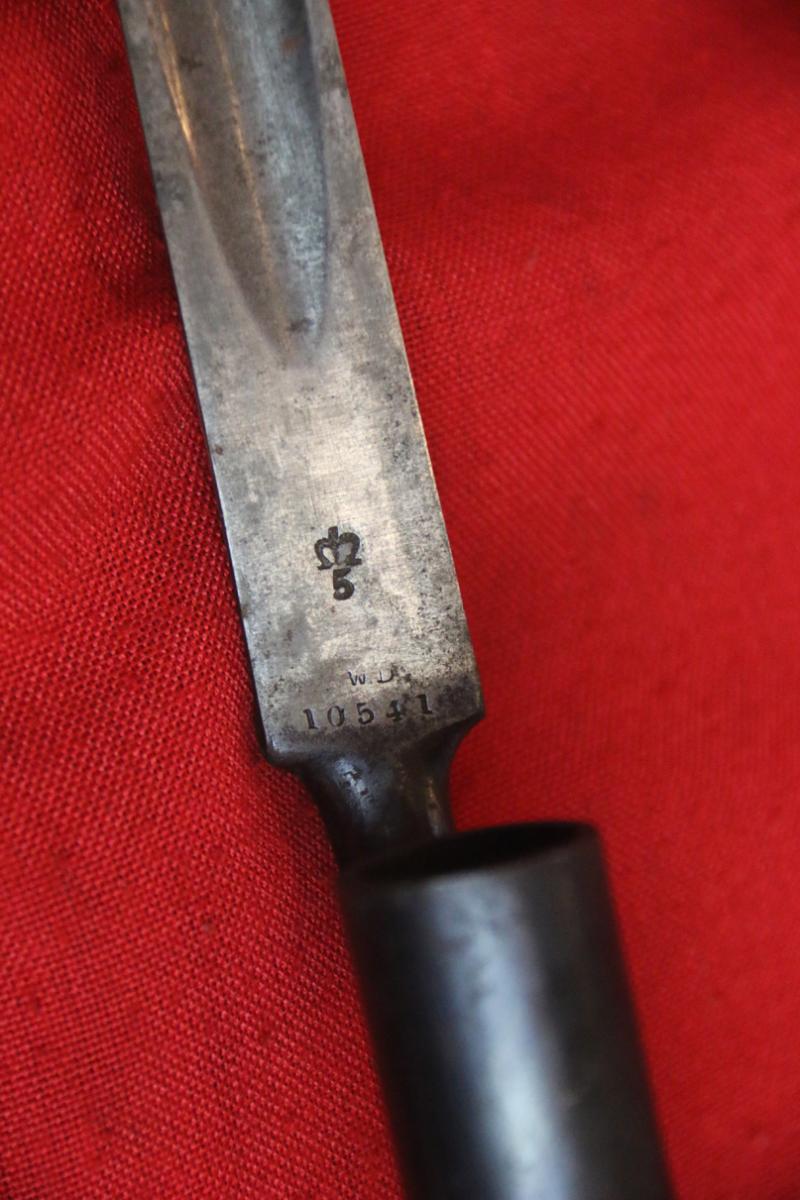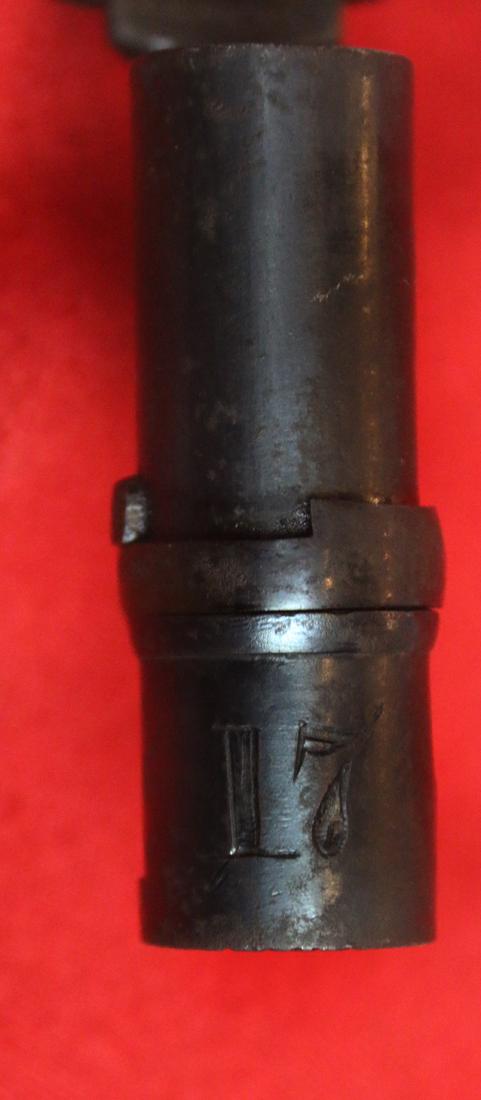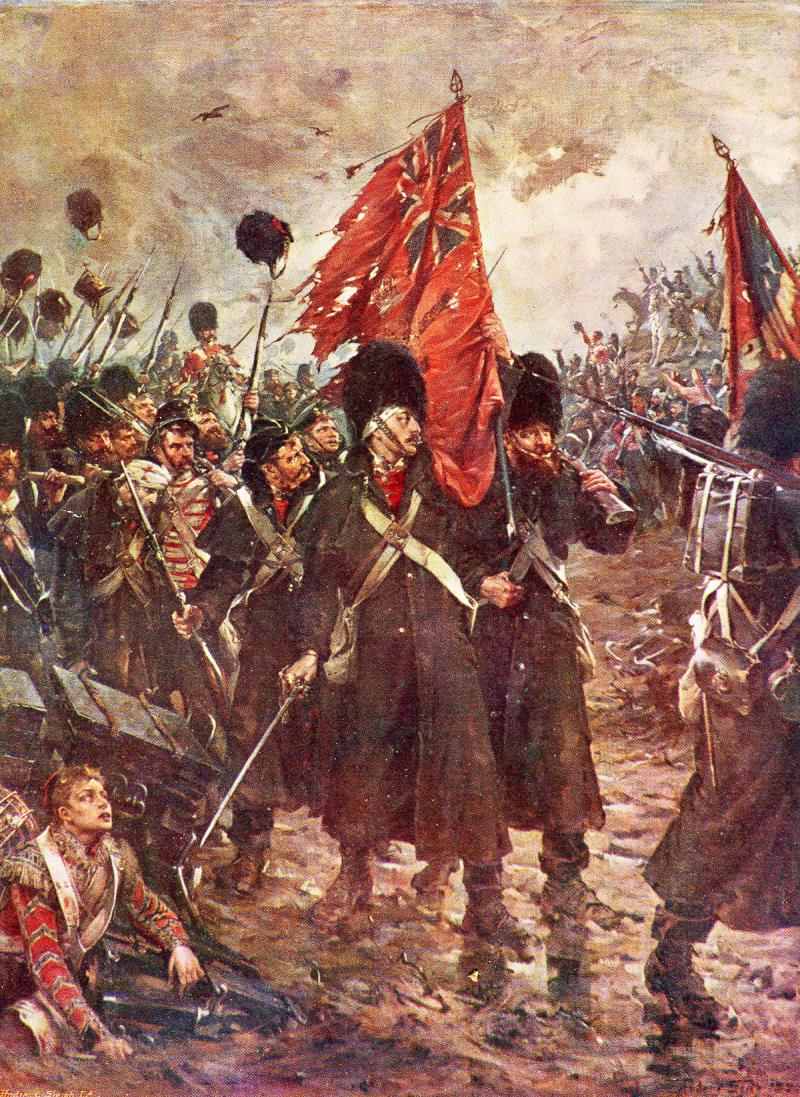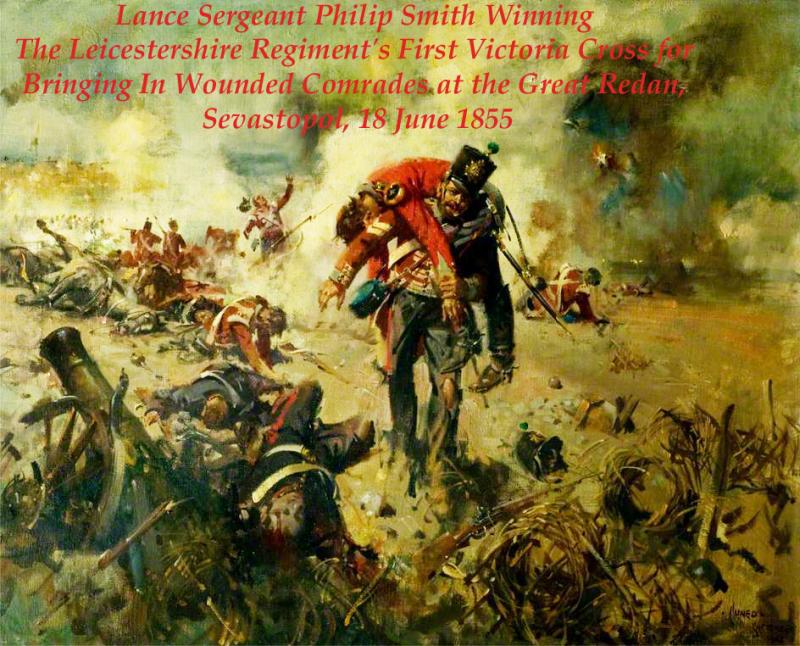1853 Enfield Rifle Bayonet With Scabbard of the 17th Foot, the Royal Leicestershire Used At Sebastopol in the Crimean War. Beautifully Regimentally Marked
In excellent condition with original blueing, and set within its brass mounted leather scabbard, stamped WD for the War Dept {WD the stamp from 1855 to 1857} and crown inspection stamp. Frankly we believe it would be well nigh impossible to find a better example. A 'sleeper' uncleaned and untouched for likely 150 years.
It is a truly exceptional example, with all original blueing, and much original surface polish to the trefoil blade, with very light natural age service wear, but very rare indeed to be regimentally marked, especially so to such a famous VC regiment of the Crimean War, plus, being the 1855 Crimean War issue. From a very good former collection of fine, original Crimean War used items.
After seven years in England and Ireland, the Regiment was sent to Gibraltar in 1854 and, when war with Russia broke out, it formed part of the army which landed in the Crimea. There it experienced all the rigours and privations of the siege of Sevastopol, taking part in the fierce assaults on the Redan, and the bombardment and capture of Kinburn. In the assault on the Redan on 18 June 1855 Sergeant Philip Smith won the first Victoria Cross for the Regiment. He was 26 years old, and a corporal in the 17th Regiment (later the Leicestershire Regiment), British Army during the Siege of Sebastopol in the Crimean War when the following deed took place for which he was awarded the VC.
For repeatedly going out in the front of the advanced trenches against the Great Redan, on the 18th June, 1855, under a very heavy fire, after the column had retired from the assault, and bringing in wounded comrades.
Royal Small Arms Factory developed the Pattern 1853 Enfield in the 1850s. The 39 in (99 cm) barrel had three grooves, with a 1:78 rifling twist, and was fastened to the stock with three metal bands, so that the rifle was often called a "three band" model. The rifle's cartridges contained 2+1⁄2 drams, or 68 grains (4.4 g) of gunpowder, and the ball was typically a 530-grain (34 g) Boxer modification of the Pritchett & Metford or a Burton-Minié, which would be driven out at approximately 1,250 feet (380 m) per second.
The original Pritchett design was modified by Col. Boxer, who reduced the diameter to 0.55 after troops found the original 0.568 too hard to load during the Indian Mutiny, changing the mixed beeswax-tallow lubrication to pure beeswax for the same reason, and added a clay plug to the base to facilitate expansion, as the original Pritchett design, which relied only on the explosion of the charge, was found to cause excessive fouling from too slow an expansion, allowing unburnt powder to escape around the bullet. The Enfield's adjustable ladder rear sight had steps for 100 yards (91 m) – the first position – 200 yards (180 m), 300 yards (270 m), and 400 yards (370 m). For distances beyond that, an adjustable flip-up blade sight was graduated (depending on the model and date of manufacture) from 900 yards (820 m) to 1,250 yards (1,140 m). British soldiers were trained to hit a target 6 feet (180 cm) by 2 feet (61 cm) – with a 2 feet (61 cm) diameter bull's eye, counting 2 points – out to 600 yards (550 m). The target used from 650 yards (590 m) to 900 yards (820 m) had a 3 feet (91 cm) bull's eye, with any man scoring 7 points with 20 rounds at that range being designated a marksman.
Code: 24974
375.00 GBP



